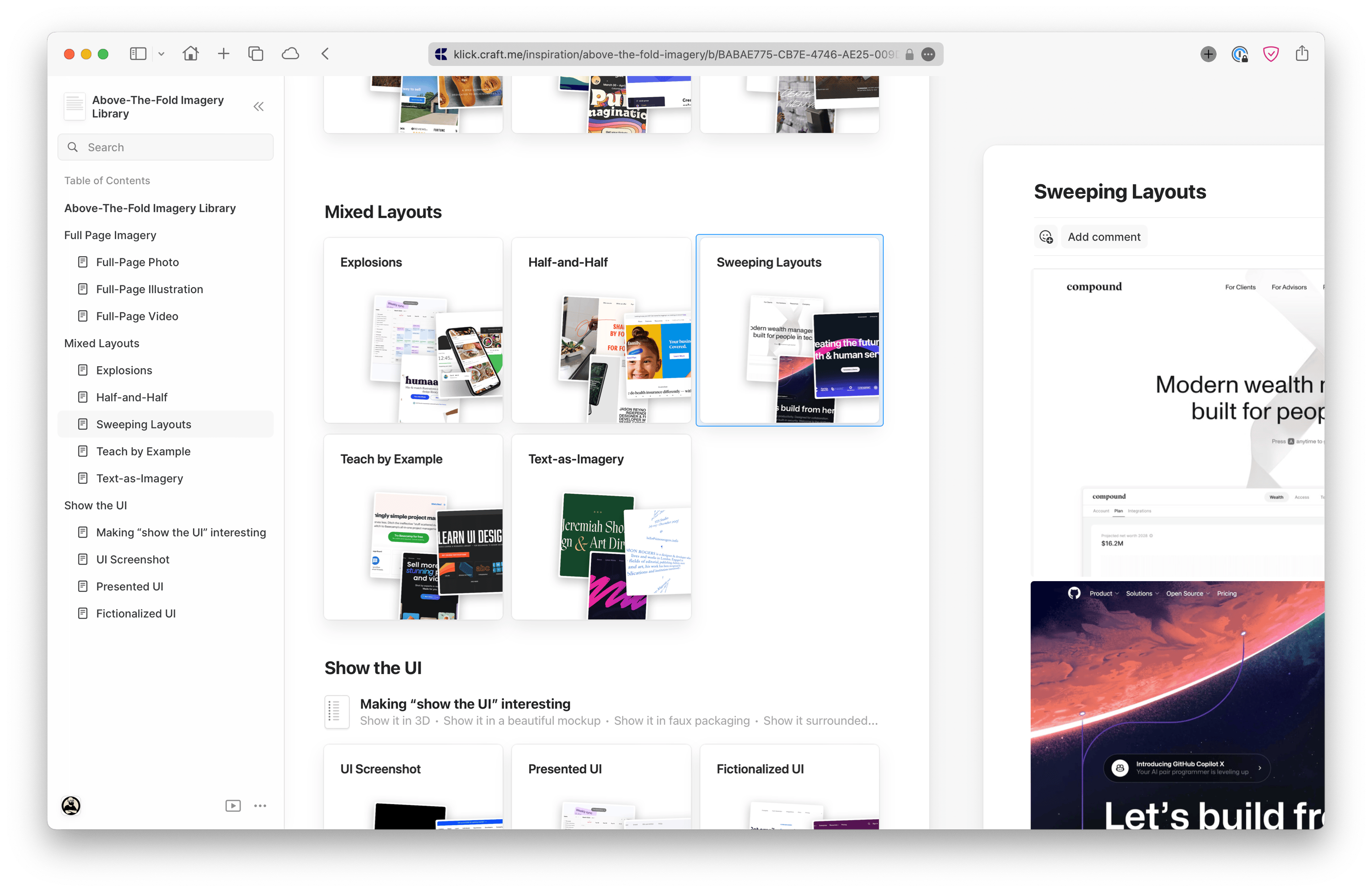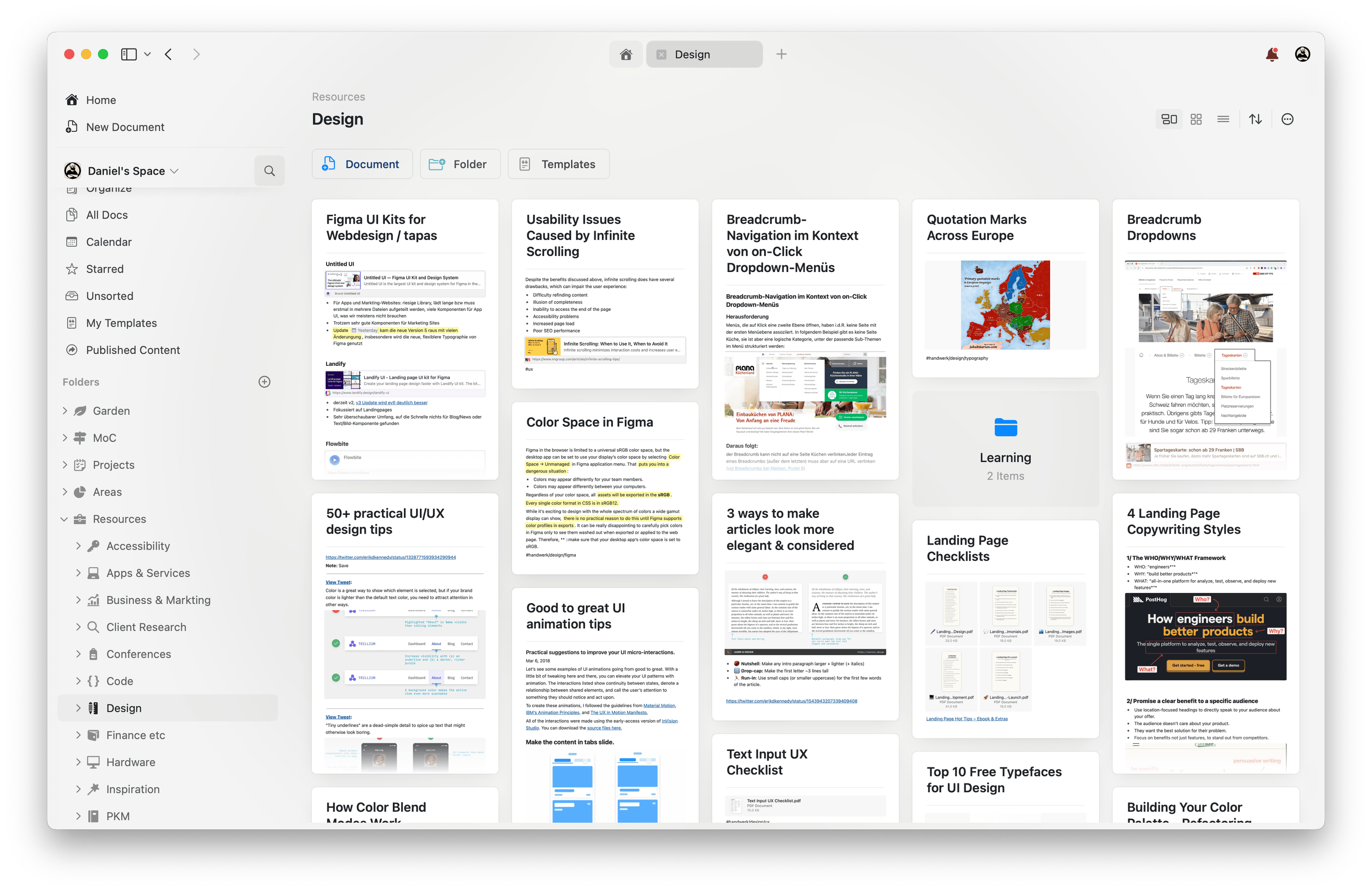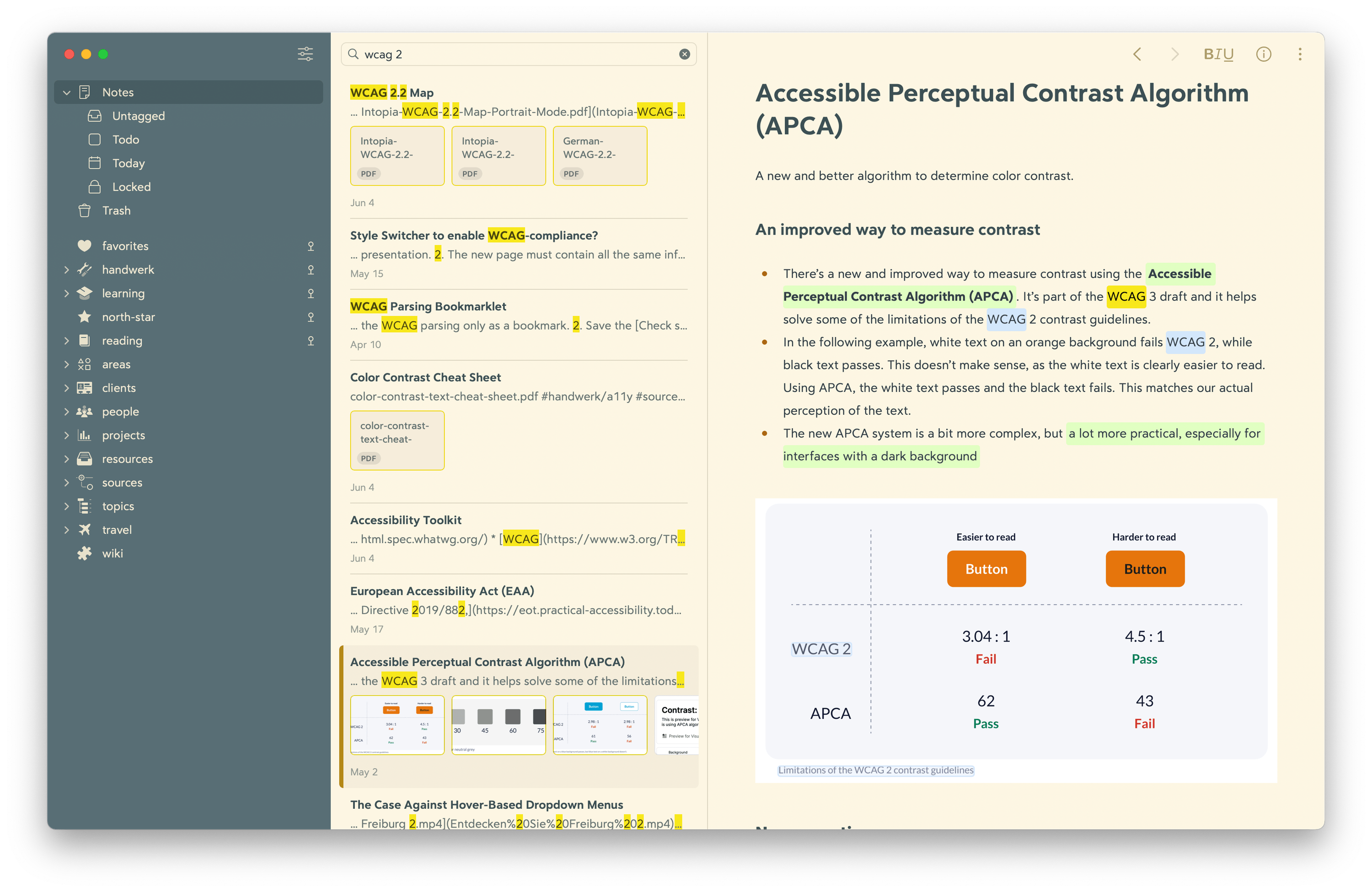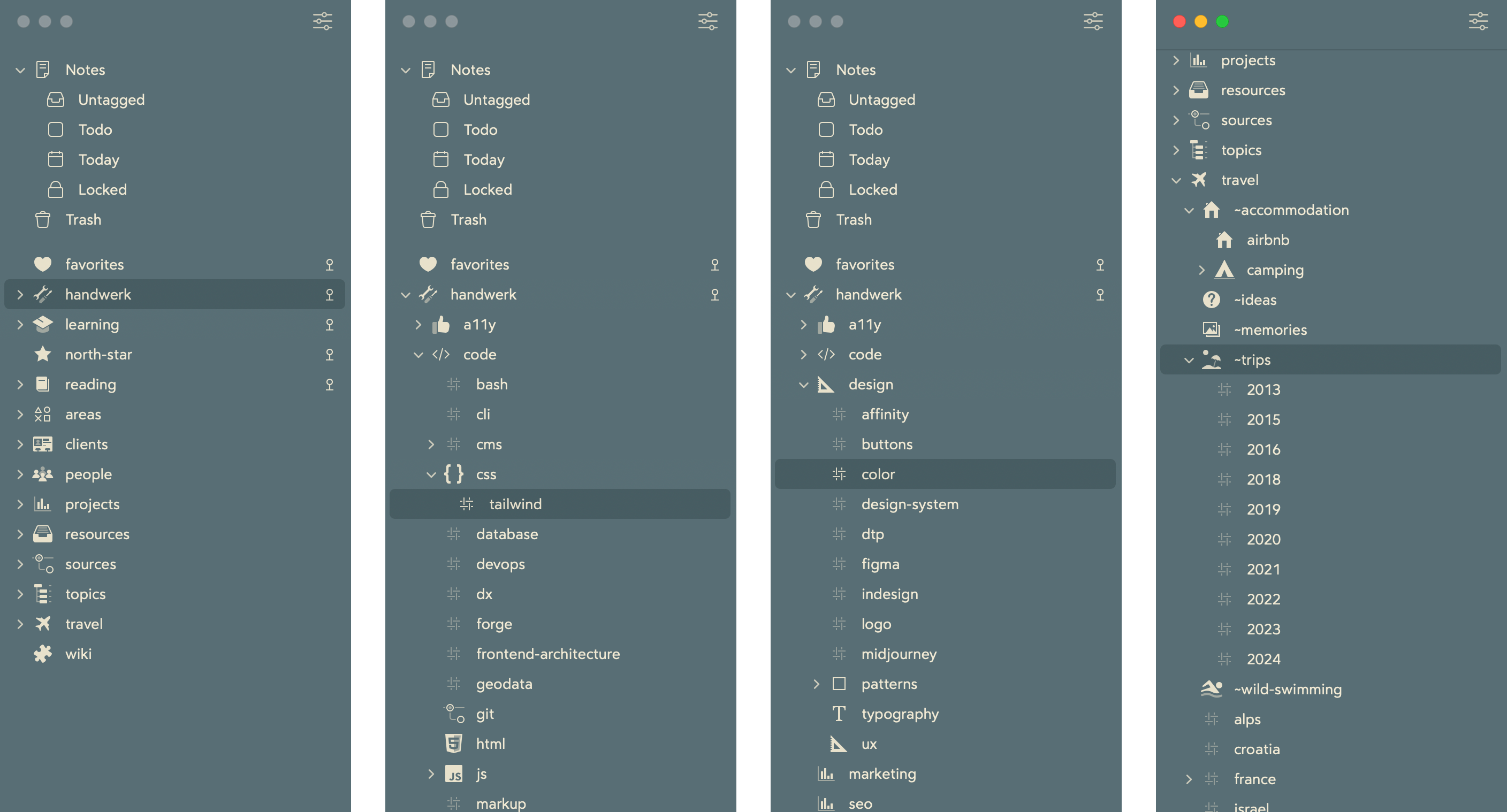Craft Docs and Bear Notes are two of my all-time favorite note-taking apps.
While having a few traits in common, here I’m gonna focus on features I personally like a lot within each and that’s mutually exclusive.

Publishing notes with a secret (or not-so-secret URL): I often need this feature to share a note, whether it’s a meeting note, a code snippet, in summary with a customer or a colleague. It’s always annoying to have to copy it from the Bear note to make it available online somewhere else. Especially because then you have the note in two places and don’t always have the latest version available under the published URL.

I love, love, love browsing notes in a card view and not just having a list view. It is so much faster to find the desired information when it is spread out two-dimensionally in front of you and you can also see preview images.
It’s just great to have a place for things whose place you don’t know or don’t know yet, and simply assign them to the day. Moreover, it is great to have this chronological level to, for example, simply mention the current or the next day, to then see over time through backlinks on which days you have taken notes on a specific topic.
It is great that you can nest a single document arbitrarily deeply and thus create a structure, so that you can manage large documents by grouping them and then navigating deeper, with this also being reflected in the published URLs by being able to open deeply nested content to the right.
Here are my arguments in favor of Bear.

First and foremost is Bear’s far superior search functionality, which has no restrictions on which blocks of content it searches because Bear simply has no blocks. Additionally, it can find matches in images using OCR technology and also indexes the contents of PDFs. Craft’s search, on the other hand, is very rudimentary and does not find content within files or even just matches that are located in different blocks or between the title and the content.

Bear has the best implementation of a tagging system among any app I have ever used. First, the classic tag argument is great: that content can appear in various areas and not be limited exclusively to one folder.
Secondly, Bear has a fantastic hierarchical tag system, allowing users to create hierarchies within these tags separated by slashes, which then feel like folders but without folder constraints. Since the tags in Bear are read from the content, it’s also very nice that you have the freedom to structure notes using a bottom-up approach. This means you don’t have to assign tags in a certain tagging function from the start — you simply write tags into the content as they occur to you, enabling a more flexible approach and saving time on structural planning by assigning categories on the fly.
Two examples:
I work around Craft’s lack of tags by creating index pages for certain topics and link to relevant notes from there. Thanks to backlinks, I’ll spot these connections from both sides.
Bear has virtually no limit* with regard to how many notes you take and how large your database becomes. Bear remains extremely snappy even with a large volume of notes. I’ve been using it with over 4,000 notes and never noticed any slowdown. Craft, albeit a bit slower in general, also never let me down performance-wise. However, it has a hard limit of 185.000 blocks per space. I’m far way from this being a problem to me, but I still don’t like the feeling of having a ceiling in how much stuff I can put in there.
*Bear uses uses your iCloud storage to sync across devices, so that defines a limit. I personally pay or iCloud anyway and trust it more than most other third party sync services, so I rather consider that advantage.
Bear is significantly cheaper than Craft Docs, even more so if you are still on the legacy plan, costing only EUR 16 per year. As both are work expenses for me, I personally don’t worry too much about price.
When I compare Bear and Craft Docs and ask myself which tool I miss the most and which app is most likely to add the missing features, there is a lot to be said for Craft. It’s been clear for a long time that the search function in Craft isn’t great and many users wish for a better one, so there’s hope that it will be significantly improved. Likewise, tags have been a long-requested feature by the Craft community, and there’s hope they will be added soon. However, it wouldn’t be a deal-breaker to get by without tags.
What actually speaks in favor of a folder approach, in my opinion, is portability. I notice now that when I export notes from Bear, and I don’t export everything at once but only notes that are under a certain tag, I inevitably also export notes that are under other tags. When I want to migrate specific areas, this inevitably leads to duplicates, whereas exporting a folder exclusively includes only the notes contained in that folder.
Moreover, the one-to-many relationship of tags can be somewhat replicated through backlinks in Craft.
Of course, there are more features to both Craft and Bear (and things they both lack) but these are the ones I care about the most. For example, I haven’t even mentioned the AI Assistant in Craft. There’s no such feature in Bear, and I don’t expect one to come anytime soon, if not via native Apple APIs. But AI assistants has never been a killer criterion for me, though I admit it’s nice to have it available every now and then. Also, tables in Craft can do a bit more, like perform simple formulas.
It has recently been announced that Craft will expand towards database-like functions in version 3. Again, not a essential thing for me, but I’m looking forward how it can be useful.
On the other hand, I have little hope that Bear will have a visual, card like overview, note-publishing or daily notes in the near future, if ever. These are features that I already use and enjoy on a daily basis. As of today, I can better work around the missing features in Craft and have higher hopes of them being added over time.
Luckily, both apps offer import and export in the TextBundle format, which makes it a bit less painful to migrate notes between them.
 A success message that communicates the opposite of success
A success message that communicates the opposite of success